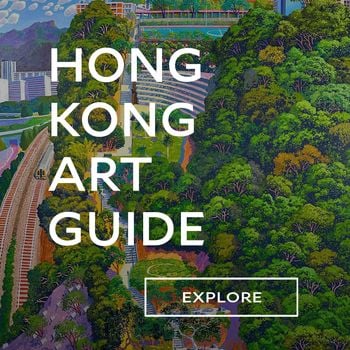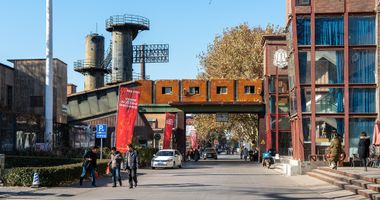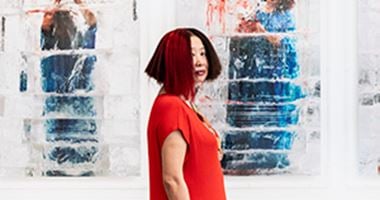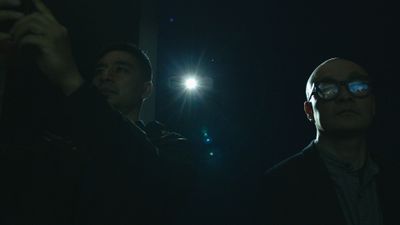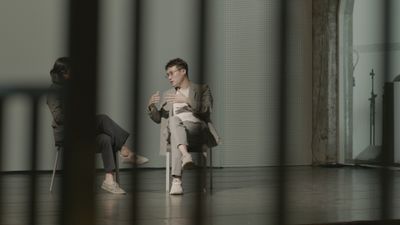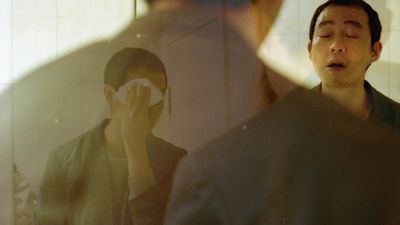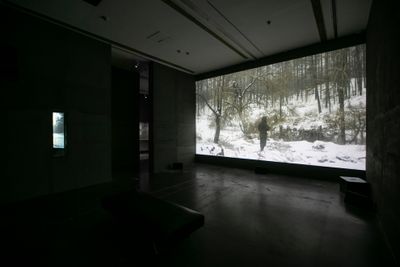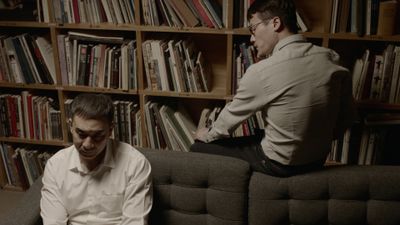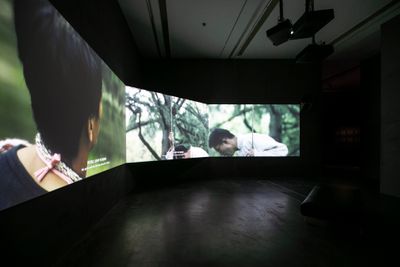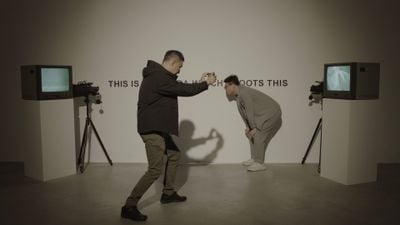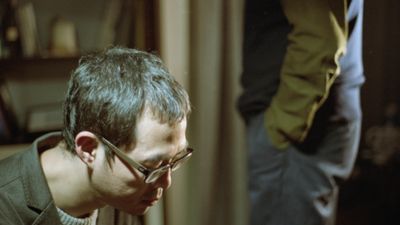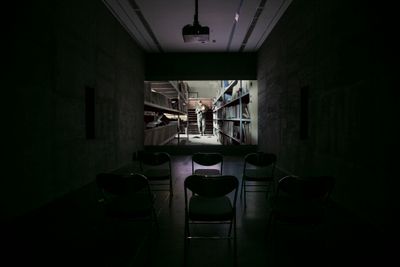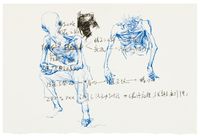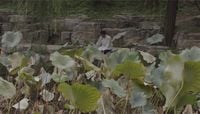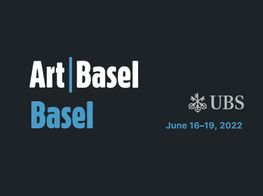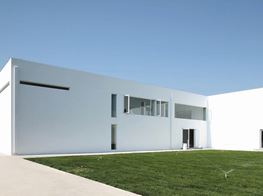Wang Tuo Interrogates China's Censorship
Wang Tuo. Photo: Shen Chen.
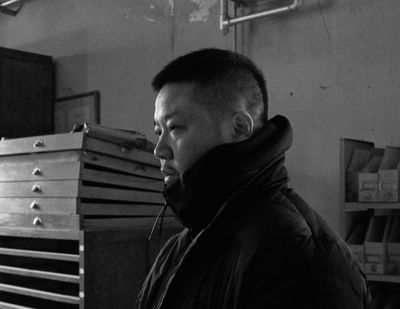
Wang Tuo. Photo: Shen Chen.
Draconian measures, including forced relocation to quarantine facilities, the shuttering of services, and the freezing of bank accounts of dissenters, prompted protests in several cities around China. Against this backdrop, it was difficult not to see the artist's latest work, The Second Interrogation (2022), as a metaphor for the present turmoil in the country.
The Second Interrogation premiered as part of Art Basel's 'Statements' section (16–19 June 2022). Dedicated to showcasing solo projects by emerging artists, the assignation of 'emerging' seems belated for an artist who recently featured in the 2021 Shanghai Biennale and staged a major solo exhibition at UCCA Beijing the same year, Empty-handed into History.
Presented as a two-channel video installation, the work echoes the dialogue and twisting tropes of a taut psychological thriller. An artist and a government censor exchange sparring dialogue during a Q&A on the occasion of the artist's performance, culminating in a tense exchange on the importance and historical impact of the Seven Sins, a series of unauthorised performances during the China/Avant-Garde Exhibition.
Originally to be exhibited at the National Art Museum China in Beijing in July 1987 (formerly, the China National Art Gallery), the show was postponed by the Anti-Bourgeois Liberalisation Campaign the same year. After additional delays, it opened in February 1989, before being shut down two hours later, after seven performances shocked the public and authorities.
Among them, Zhang Shengquan, Zhu Yanguang, and Ren Xiaoying, walked through the exhibition space draped in white mourning sheets. Wu Shanzhuan sold shrimp to reflect the relationship between art and consumption, and Wang Lang dressed as a swordsman, lingering menacingly in the corners.
Li Shan washed his feet in a basin decorated with Ronald Reagan's image, while Zhang Nian sat surrounded by hatching eggs. Wang Deren threw condoms and coins into the crowd, and Xiao Lu famously shot her own artwork, Dialogue (1989), with a pistol, surrendering to authorities shortly after.
The countrywide student protests of 1989 would begin two months later, culminating with the weeks-long occupation of Tiananmen Square and the June Fourth Incident. Hindsight mistakenly suggests these incidents are connected, if only because they happened around the same time, expressed a desire for certain freedoms, and were eventually curtailed.
It was perhaps the sharp crack of Xiao Lu's pistol as two shots rang out in the exhibition hall that clinched these two events together. The performative gesture of violence seemed like a precursor for what came after. As both historic events have been continuously litigated and revised, the gulf widens. Such historical revisionism and interpretation lie at the core of The Second Interrogation.
As the dialogue between artist and government censor approaches sensitive topics, the public talk switches to a private dialogue on the possibilities for political reform. What follows is an admission of the secret roles played by both speakers; the artist is in fact a government informant, while the censor has come to appreciate the value of art in the surveillance state.
Throughout, the dialogue and internal monologue of both characters interweave and overlap, as to render parts of the narrative almost impossible to follow, hiding the narrative in plain sight. The effect is exhilarating as if being privy to a dangerous conversation that shifts sympathies with every subsequent viewing.
Given recent lockdowns and the widespread crackdown on dissent, Wang's latest work and its subject matter are unlikely to be viewed kindly in mainland China—if it is to be seen there at all. Speaking to this, one character in the film is an artist who finds himself the subject of surveillance. He fears someone within the art community is informing on him, and subsequently finds himself being 'invited to tea'.
In the following conversation, Wang elaborates on the events that motivated The Second Interrogation, which features in his upcoming exhibition with Blindspot Gallery, Hong Kong (21 March–6 May 2023), the difference between reform and revolution, historical amnesia, China's plausible trajectories forward, and more importantly, the urgency of confronting censorship and self-censorship.
HWCould you describe the events surrounding the making of The Second Interrogation?
WTIt started with a work called The Interrogation (2017), which I made when I first returned to China in 2017. The work is based on my interview with an old friend who had entered the civil service after graduate school and was transferred to the Commission for Discipline Inspection at the provincial level.
I was interested in his day-to-day job, especially his interrogations of government officials during shuanggui [internal disciplinary process that detains members of the Chinese Communist Party suspected of corruption]. This is the dark side of Chinese society everyone knows about but rarely have access to.
I still remember his biggest shock from those years: high-ranking officials revered by thousands became incontinent during interrogation; some would even jump out of the window when they received investigation calls.
The collapse of these establishments is a metaphor for reality, as the interrogation is an extreme form of interpersonal communication that makes you wonder about its application in other scenarios, such as interviews, which are common and have a similar structure.
Based on his experience, the main narrative in The Interrogation is about a young man's interview, which slowly turns into an interrogation, as his role changes from the scrutinised to the interrogator.
At the time, I had vague ideas about the cultural censorship that has long been a part of our lives. Over the years, I gained more experience with people from that department. Some showed up at my exhibitions and public talks, and some even asked for my WeChat contact information. They like and forward my posts that are somewhat inappropriate or even pessimistic, but their attitude remains unclear to me. I am not particularly wary of them. If they see what I write, then I consider it a form of communication.
In The Second Interrogation, I imagined a fictional situation in which a censor who has worked for the government for over two decades betrays the system. At the same time, an artist gradually realises his dependence on the system and places 'greater value' on the censorship he has encountered. The two eventually confess their identities to each other in a series of direct and indirect confrontations.
The situation in the work may seem extreme, but I developed the two characters from real-life references.
HWThe video features a dialogue between an artist and a government censor during and following the artist's talk, the key element of which is the 1989 China/Avant-Garde Exhibition and its historical importance.
Simmering beneath the surface is the student democracy movement, which culminated in the Tiananmen Square protests and the June Fourth Incident, and their implications for China's progress. The censor publicly questions the conflation of the two events. Privately, he laments the interruption of the revolutionary process, while the artist suggests that the moment was performative and premature. Where do you sit?
WTIn the series of confrontations between the two characters, their ideas about the system and social progress are not only slowly fine-tuned and gradually established in their debates, but drawn closer to one other. Perhaps both their social beliefs seek to make the world a better place, although in obviously different ways.
Behind all this is a dialectic against autocracy. It's historically revisionist to juxtapose or even establish a link between the 1989 China/Avant-Garde Exhibition and the student movement of the same year. These two events give each other meaning, thus proving the prophecy and enlightenment of art in social reforms.
At the core of their debate is the interpretation of the history that echoes present circumstances—whether the subjective driving force of the people in the movement is more important, or the trajectory of the era itself is more reliable—because it determines our actions in the present.
I agree that the China/Avant-Garde Exhibition and the student movement both interrupted the progress of its own reform. This is almost a consensus between the censor and the artist. The first ended the government's tolerance of contemporary art, while the second, to some extent, interrupted the institutional reform the ruling clique discreetly promoted for the continuation of its regime.
In turn, China's progress towards democracy regressed. As the artist says in the work, the China/Avant-Garde Exhibition is symbolic. My position is implied in the debate between the two characters. Since our previous actions are incomplete, should we—and how can we—learn from this history of failure to complete these actions?
HWIn the film, there are allusions to artists 'disappearing' or being 'invited to tea', idioms specific to China to say one is taken in for interrogation by security bureau officials.
Presently they are more than idioms, as the recent lockdowns in Shanghai and elsewhere demonstrate. Even public health measures are being weaponised to control speech and artistic creation. The Second Interrogation seems to reflect this while drawing parallels to the events of 1989.
WTIf we could revisit this year in the future, things must look very different. Beyond the possible changes inherent to internal conflicts among upper-level political cliques caused by constitutional reforms four years ago, the removal of presidential term limits among them, pandemic-induced mandates presented themselves as tools for governance in many cities in China this year.
When I decided to make this work, my thoughts and emotions had already accumulated to the edge of an avalanche, so I had no choice but to let them out.
While appearing as an ideological by-product or a form of public display, they also created an opportunity for the enlightenment of civic consciousness. This civic consciousness among Chinese people lacked the external driving force to fully emerge due to the historical inertia of low political participation and the relative preservation of day-to-day civil rights of those living in big cities during peacetime.
But this year, when Shanghai's pandemic prevention measures severely violated the basic rights of many, it seemed the giant machine finally lifted its misty curtain. People finally realised that economic development has been regarded as politically correct since China's reform and opening, while the democratic demands represented by civil rights have been evaded and displaced.
It's a complicit amnesia; the abuser does not allow the victim to remember, and the victim does not want to.
It was only when people realised they could be forcibly transported to shelter hospitals for isolation, and their homes could be broken into for sterilisation, that they comprehended they never really had rights. Everyone can be sacrificed for 'the big picture'.
Some will also gradually realise that if this is the case in Beijing and Shanghai, in the regions no one pays attention to, it's a reality people have long adapted to. From their traumas, people can trace the bigger, underlying problems.
This is a moment of enlightenment—people realise the opportunity to change reality is in their hands. Under this enlightenment, our society potentially parallels that of 1989, in my opinion. But how will it evolve? Although everyone feels a crisis of self-existence, I am pessimistic about the future.
I don't want to see the long-overdue moment of enlightenment turn into a fleeting spark, but people always replace old tragedies with new ones. It's a complicit amnesia; the abuser does not allow the victim to remember, and the victim does not want to.
HWThe film also features an artist under intense scrutiny from the authorities and fears that he is being watched by someone on the inside. Does this reflect personal experience?
WTMany artists in China who discuss political issues may not confront the issues directly or make clear statements. Vague expressions are often a form of protection, especially for sensitive political topics. They need to rely on rhetoric and use the aesthetic appeal of art to cover the ideological discourse underneath.
The pressure behind this zigzag interpretation is not only from the government but also the museum-going public, growing in numbers in recent years. For many extreme nationalists, socially critical works of contemporary art are not only a sin, but 'ill-intentioned sarcasm' and 'politically incorrect' because they do not conform to the so-called 'positive energy' of mainstream socialist values, or praise the country's economic development and international competence.
Some instances are just ridiculous. For example, an oil painting by a well-known artist displayed at an art museum a few years ago was reported by a visitor for depicting a grinning marine. As a result, both the exhibition and the museum were ordered to close for rectification.
From the perspective of the government's literary and art censorship department, all images and symbols related to or associated with politics are over the red line. Most Chinese artists have already disciplined themselves not to cross it, but there are still unexpected problems.
At an art biennial on the theme of science and technology a few years ago, many works that criticised the pitfalls of technological development were censored and withdrawn, despite not seeming to touch on sensitive political topics—precisely because of the government's political ideology.
China regards the development of science, technology, and its economy as top priorities in international competition. To ensure the development of these industries, other issues can be set aside or even covered. The direction of national development doesn't tolerate dissent or criticism. In addition to censorship from the government and the public, there is unspoken censorship from those who work in the art world. I cannot say for sure that I know such people, but they exist.
There can be many reasons for them to partake in censorship—different political views, personal grudges, or collaboration with the government. Their accusations may be the most difficult to muddle through because they can dismantle and expose ideological issues hidden inside the artworks to political risk.
HWCensorship and artistic freedom appear incompatible, but as the burgeoning of disinformation online becomes an increasing problem for many governments, and so-called democratic countries increasingly curtail free speech, might censorship become necessary for social stability?
As the artist in The Second Interrogation suggests, people rely on a functioning system. If the system is sick, people suffer.
WTFree speech is a global issue, but we must distinguish its circumstances within different regions and its variants within specific contexts. In China, when people talk about free speech, they often compare it with the status quo in the West. However, they can easily mistake overdone political correctness for free speech.
In some places, free speech can still be used as a weapon of resistance. In others, people are unarmed and unable to make a sound.
Many believe the West faces the same problem regarding free speech. If you express politically incorrect remarks about ethnic minorities, sexual minorities, refugees, or the poor, you will get into trouble, and even be severely punished, so it would seem people need to hold their tongues in both places. This simple and universally wrong argument is very popular in China.
The key people often ignore is that free speech is not without boundaries. It contains the core of political correctness, which is to protect minorities and the vulnerable in society. But in China, political correctness is often the opposite. If your words hurt the weak, you may not be punished. But if you criticise a government official, you may pay for it.
In terms of free speech, the world is indeed in visible regression. The shared root cause is that speech and information have largely been reduced to tools for partisan fights and government control. The difference is that, in some places, free speech can still be used as a weapon of resistance; in others, people are unarmed and unable to make a sound. They are fooled and happy in their foolishness.
HWWhen I watched The Second Interrogation, I had two thoughts: it's a seminal work, and a dangerous one, both for you and a state apparatus increasingly designed to protect itself. It's also a work that will probably never be seen in China. Are you concerned about being 'invited to tea'? What were your intentions in making this work?
WTIndeed, it's almost impossible, even dangerous, to publicly exhibit this work in China. But for me, the purpose of making art is no longer to exhibit. An exhibition is just a way to share information. I will consider a non-public display and a way to present it relatively safely through a chain.
As for the fear of being 'invited to tea', I honestly cannot be sure. On one hand, I have learned from experience that the power in front of you is not so mysterious and unfathomable; on the other, it's hard to determine where the boundaries are in extreme cases.
When an artist encounters an irrepressible urge to create, it feels like an adrenaline rush, and it's difficult to think about self-protection and consequences in those moments. When I decided to make this work, my thoughts and emotions had already accumulated to the edge of an avalanche, so I had no choice but to let them out. The driving force behind them is the historical moment China is in; as the mist slowly dissipates, the tides fall and reveal the jagged rocks underneath.
Ambiguous, evasive expressions cannot reproduce the significance of such urgency. Therefore, in The Second Interrogation, beyond confronting undiscussed issues, I wanted to put forward ideas for the future. What are our possibilities? What should we do next? Another purpose of making this work is to expand the boundaries of what can be discussed in this country ever-so slightly.
If someone dares to say what no one else has dared, more suppressed voices can be let out. People may be punished at first, but when their voices are too loud to be silenced, the people of this country will have their true moment of enlightenment.
HWReform or revolution?
WTIn The Second Interrogation, the final confrontation between the artist and the censor revolves around three concepts: reform, transformation, and revolution. When discussing why the 1989 student movement failed, both were sceptical of revolution.
The artist has hopes for the system. He thinks it should be given time to reform from the inside for self-continuation and should not be interrupted by a destructive revolution. The censor believes that the system has been transformed by the 1989 student movement into a machine dedicated to maintaining its own domination, so the artist's hopes are unlikely to come true.
Rather than waiting for the system to reform from the inside-out, it's more important to start with public enlightenment, and then exert pressure on the system from the outside-in to enforce reform. This kind of enlightenment is the true meaning of culture and art in contemporary China.
Transformation becomes an intermediate state between conservative reform and radical revolution. Its results are like reform but close to revolution in its form of progression. Whether there will be reform, transformation, or revolution, this proposition calls for repeated dialectics in China across dynasties.
Regardless of their content, such dialectics are based on rationality. After his analysis, the censor gives another possibility. A country, whatever its future holds, needs to reserve a way out that does not rely entirely on reason. Once people gain enlightenment, no matter how the deadlock is broken and what the consequences are, their emotions will be the driving forces of history with unstoppable power.
HWDo you have any upcoming projects?
WTLater this year, I will work on a project I've been thinking about for several years, and these thoughts have appeared in my works. In 'The Northeast Tetralogy', for instance, I use my understanding of Ming dynasty thinker Li Zhi to explain some problems we face, including the relationship between the individual and the state and the memories we are constantly forgetting.
How to 'never forget' in the present is a question that has troubled me for a long time. —[O]

